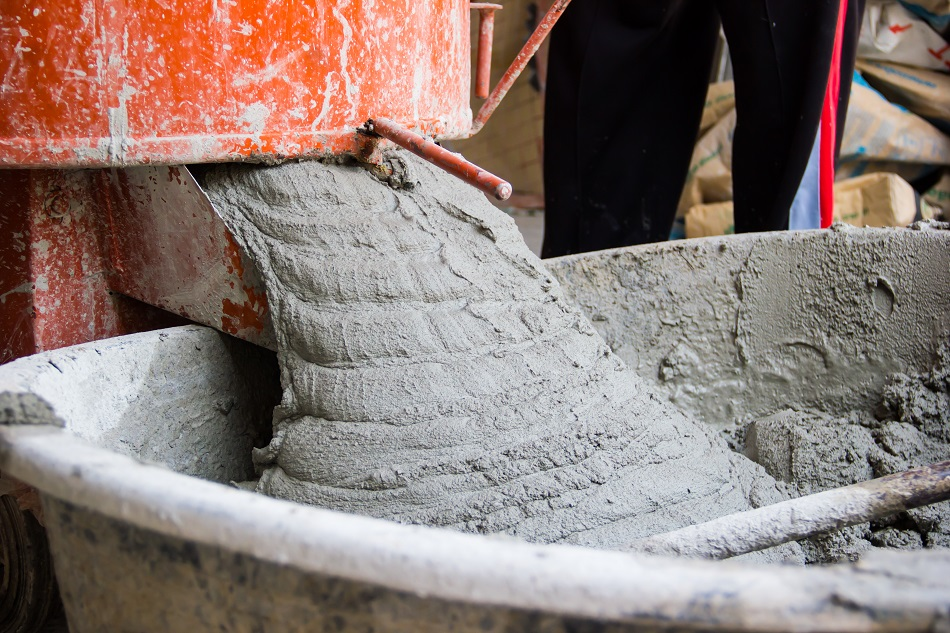
Image Credit: Numpon Jumroonsiri/Shutterstock.com
Raman spectroscopy has been used to analyze the chemistry of cement since the 1970s, but this was plagued by various issues, including photoluminescence interferences.
Technological advancements in Raman spectroscopy over the years have enabled its use in the analysis of cement, often as a complement to other techniques such as x-ray diffraction (XRD). Current Raman technology has enabled researchers to study various aspects of cement chemistry, with the focus being on cement hydration processes. Modern cement research typically uses Raman spectroscopy as a go-to method for describing the chemistry of cement-based materials.
Principles of Raman Spectroscopy
Raman spectroscopy is a research technique based on the particular vibrational and rotational states of molecular bonds in a sample material. Specifically, Raman spectroscopy is founded on the inelastic scattering of laser-generated photons by a test sample.
In a Raman spectroscopy, a laser interacts with sample molecules. Most photons that are scattered as a result of this interaction have the same frequency, but a small percentage is scattered at higher or lower optical frequencies, which is known as Raman scattering. These up and down transitions happen concurrently in Raman scattering.
The change in energy, known as Raman shift, supplies information about the vibrational states of molecules in the test sample. Since each molecule has its own energy shifts, Raman shift allows for the chemical identification of known compounds in a test sample.
Examining Hydration in Cement Using Raman Spectroscopy
The distinctive qualities of concrete are largely determined by paste hydration. Other analytical techniques applied to the hydration process, including XRD and scanning electron microscopy (SEM), have concentrated on the results of chemical transformations or morphology.
Raman spectra can signify significant mineral phases within cement-based materials. The in-situ examination of cementitious pastes using the technique provides useful insight on cement’s hydration sequence.
Because of the heterogeneity of these materials, the reproducibility of Raman tests can be challenging as the cement paste samples are affected by carbonation. Consequently, good sample preparation and testing are required to effectively use Raman spectroscopy in the research of concrete.
Raman spectroscopy has been used to make chemical characterizations of clinker phases and hydration products, such as tricalcium silicate (C3S), dicalcium silicate (C2S), and calcium hydroxide (CaOH2). The hydration sequence of individual clinker phases has also been researched by Raman spectroscopy. Recent research has found that the technique can be used both in-situ and as a real-time technique to examine the hydration sequence of Portland cement while it is setting. Researchers have also discovered that Raman spectroscopy was capable of examining the dehydration sequence of gypsum phases in cement production. All these research studies indicate that the Raman spectroscopy can be a strong method in examining cement hydration.
In one study, published in December 2015, researchers used Raman spectroscopy to create a chemical map of the cement hydration process, with a 6-to-10, water-to-cement ratio. The study team used Raman spectroscopy to analyze cement pastes from 12 hours after mixing all the way through to 28 days. The researchers said they were particularly focused on calcium silicates (C3S and C2S), calcium hydroxide (CaOH2), and ettringite, a calcium aluminum sulfate mineral.
The report stated they were able to see calcium silicates gradually consumed as hydration as time progressed, with calcium hydroxide clustering and ettringite developing on the exterior of unreacted particles.
Based on these observations of the hydration process, the researchers concluded that Raman spectroscopy is an effective tool to create chemical maps of cement samples.
Sources and Further Reading
Disclaimer: The views expressed here are those of the author expressed in their private capacity and do not necessarily represent the views of AZoM.com Limited T/A AZoNetwork the owner and operator of this website. This disclaimer forms part of the Terms and conditions of use of this website.